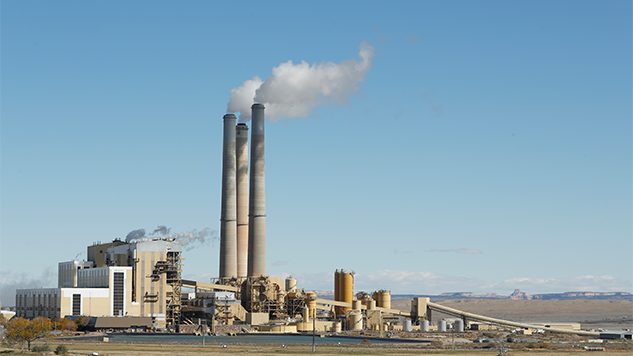Study: Black and Hispanic Americans Create the Least Pollution, Are Exposed to the Most
Photo by George Frey/Getty Politics News Pollution
A new study from researchers at the University of Minnesota quantifying “pollution inequality” (“the difference between the environmental health damage caused by a racial-ethnic group and the damage that group experiences”) exposes how air pollution disproportionately impacts Hispanic and black populations in the United States.
Published in the Proceedings of the National Academy of Sciences, the study tracked the personal consumption of black, Hispanic and white people, along with the government. Researchers examined how this consumption contributed to the creation of air pollution exposure through the different demographics’ support of the systems that produce such pollution.
David Reichmuth, who contributed to the study, explained to CNN, “While the consumption of energy and products is driven by the consumer, that pollution is coming from the system that produces our electricity and produces our food and gets our goods around the country.”
“The pollution is coming from the systems, we use, not the consumers,” he added. “It’s coming from electricity generation, coal, fossil fuels and even fertilizer and animal waste.”
The research team measured how much each population was using different pollution-related goods and services by separating them into different “end use” categories, such as electricity, transportation and food. They found that there was an alarming gulf between those whose consumption indirectly led to air pollution and those who lived in areas that experience more pollution exposure.
The average non-Hispanic white person has a “pollution advantage,” as they experience around 17 percent less air pollution exposure than is produced due to their consumption patterns. Black and Hispanic people shoulder a “pollution burden.” Black people experience 56 percent more air pollution exposure than they cause through their activities and Hispanic people experience 63 percent more exposure. This disparity has a very real impact on minority communities, as fine particulate matter air pollution is the “largest environmental health risk factor” in our country. Consumption isn’t the only factor at play here; so is the fact that this hazardous pollution is more often found in areas that are predominately black or Hispanic. It’s yet another reminder that representation matters in business and government, as those in power are the ones who decide where factories and other pollution producers are located.
There is one silver lining, though, as the study found that the levels of fine particulate matter air pollution have dropped between the years 2003 and 2015.